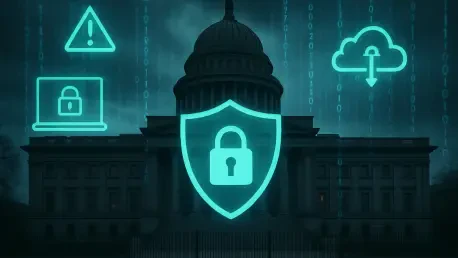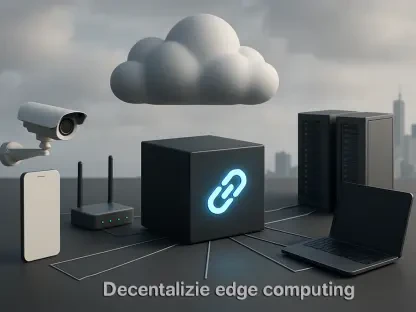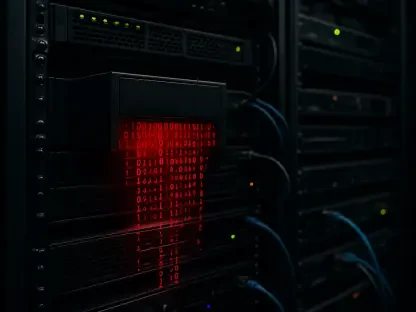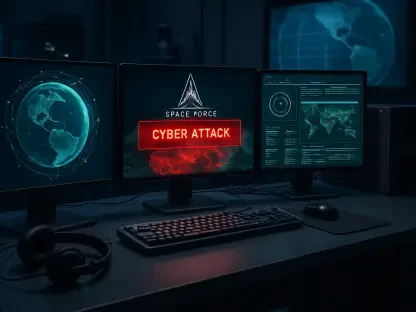In an era where cyber threats are becoming increasingly sophisticated, State, Local, Tribal, and Territorial (SLTT) government organizations face a daunting challenge in safeguarding critical data and public services with often limited budgets and staffing. These entities are prime targets for ransomware, data breaches, and other malicious attacks that can disrupt operations and erode public trust. The Center for Internet Security (CIS) has stepped in with a game-changing solution through its Commercial Cloud Managed Detection and Response (MDR) service, powered by advanced technology, to address these escalating risks. Designed specifically for the unique needs of SLTT organizations, this offering promises robust protection and operational support, ensuring that even resource-constrained teams can stand firm against cyber adversaries. By blending cutting-edge tools with expert oversight, the service aims to redefine how government bodies defend against digital dangers, setting a new standard for public sector cybersecurity.
Strengthening Defenses with Advanced Technology
The cornerstone of the CIS MDR service lies in its integration of state-of-the-art endpoint protection technology, which provides a formidable barrier against a wide array of cyber threats targeting government systems. Hosted on a secure cloud infrastructure, this solution employs advanced features such as exploit prevention and deep learning-based detection to identify and neutralize ransomware and other complex attacks before they can cause harm. Unlike traditional security measures that react after an incident, this approach emphasizes early intervention by blocking malicious websites, unsafe applications, and other entry points for attackers. The result is a significant reduction in risk, allowing SLTT organizations to protect sensitive information without diverting focus from their primary duties. This technology, trusted by hundreds of thousands of entities globally, ensures that government bodies have access to proven tools tailored to their operational and compliance requirements, creating a resilient first line of defense.
Beyond the technology itself, the CIS MDR service extends its protective capabilities through comprehensive coverage across endpoint devices, workstations, and servers, ensuring no potential vulnerability is left unaddressed. This layered, defense-in-depth strategy is designed to detect both known and emerging threats, offering real-time investigation and rapid neutralization of incidents. A prevention-first mindset further enhances security by stopping repeat attacks, addressing the root causes of vulnerabilities rather than merely their symptoms. For SLTT entities, often operating with limited in-house expertise, this means a proactive shield against cyber risks that might otherwise overwhelm their resources. The seamless deployment of these protective measures across diverse systems underscores the adaptability of the solution, ensuring that government organizations of varying sizes and complexities can benefit from a unified security framework that evolves with the threat landscape.
Enhancing Security with Expert Support and Monitoring
A defining feature of the CIS MDR service is the continuous, round-the-clock monitoring provided by the CIS Security Operations Center (SOC), which acts as a vital extension of local IT teams in SLTT organizations. This expert oversight filters out false positives, escalates actionable alerts, and delivers threat intelligence to ensure timely and effective responses to potential incidents. By alleviating the burden of constant vigilance from understaffed government teams, the SOC enables these organizations to focus on core missions while maintaining a high level of security. The integration of specialized support means that even the most intricate cyber threats are met with informed, decisive action, bridging the gap between limited internal capabilities and the growing demands of cybersecurity. This partnership approach transforms how SLTT entities manage digital risks, providing reassurance that expert assistance is always at hand.
In addition to ongoing monitoring, the CIS MDR service offers access to the CIS Cyber Incident Response Team (CIRT) for in-depth forensic analysis and incident handling during critical situations. When a breach or significant threat emerges, this specialized team steps in to investigate, mitigate damage, and support recovery efforts, ensuring that government organizations can return to normal operations as swiftly as possible. This level of tailored assistance is particularly crucial for SLTT entities, where a single incident can have far-reaching consequences for public safety and trust. The combination of continuous SOC monitoring and on-demand CIRT expertise creates a comprehensive safety net, addressing both immediate threats and long-term security needs. By embedding such robust support structures, the service empowers government bodies to navigate the complexities of cyber defense with confidence, knowing that specialized resources are readily available to tackle any challenge.
Building a Future of Resilient Public Sector Cybersecurity
Reflecting on the impact of the CIS MDR service, it becomes evident that its introduction marks a pivotal moment for SLTT organizations striving to secure their digital environments against relentless cyber threats. The fusion of cutting-edge endpoint protection with dedicated expert support through the SOC and CIRT has proven to be a transformative approach, addressing both technological and human resource challenges. This initiative has not only fortified defenses but also set a benchmark for how tailored cybersecurity can empower government entities to protect critical data and services effectively. Looking ahead, the focus should shift toward expanding access to such solutions, ensuring that even the smallest jurisdictions can leverage these advanced tools. Encouraging collaboration between public sector leaders and cybersecurity providers will be key to scaling these protections, while ongoing investment in training and awareness can further strengthen resilience. By prioritizing adaptive, scalable strategies, SLTT organizations can build a future where cyber threats are met with unwavering preparedness and robust defense mechanisms.









